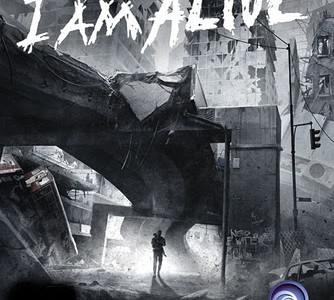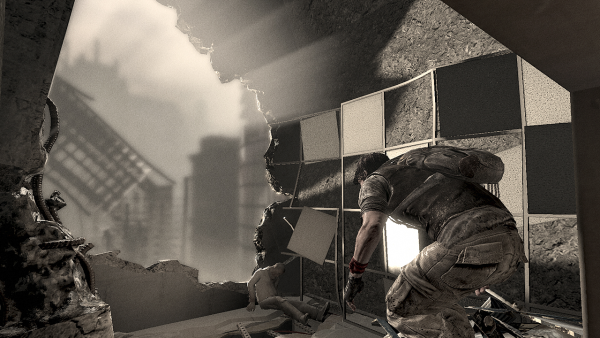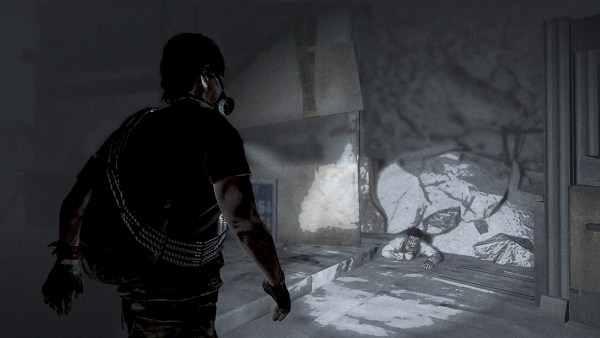Catastrophic earthquakes have destroyed all of civilization’s accomplishments. Subway cars span concrete chasms, giant ships from the harbor now rest in the middle of once-busy city streets, and railways intertwine with downed skyscrapers. Dust storms ravage the lower streets, and gangs terrorize any survivors they find.
I Am Alive puts the player in control of an unnamed father and husband as he returns to his home city of Haverton to find his family following the “Event.” Haverton has become a disaster zone, overrun by murderers and leftover survivors who were unable to evacuate. Resources are few and far between; having just one bullet makes a lethal threat. In the first hour, I Am Alive proves just how heavy and amazing a post-apocalyptic wasteland game can be.
It’s also a perfect example of how to fall short on the execution of a great idea.
I Am Alive takes its post-apocalyptic, urban setting and does nothing extraordinary with the character in it. All missions are fetch quests, from clearing a gang’s hideout for a radio transmitter or finding a bottle of wine for a weary old woman. If they’re not looking for help, they’re looking to kill for no reason. I expected more variety to the objectives and interactions with NPCs than what I Am Alive actually offers, and was duly disappointed.
In combat, enemies bully and taunt at first if they smell unarmed prey. This allows players a chance to carefully pick targets and create a plan of attack. Once a hostile gets close enough, he can be easily dropped with a surprise kill, and then a gun can be drawn on the others to intimidate them. If they’re only carrying machetes, they’ll back off a bit in fright, and can be ordered to back up further – usually closer to a pit or fire. This tactic works even if the player doesn’t have any bullets; pull the trigger without ammo though, and the thugs will know they have the advantage.
It sounds pretty cool, but when most available actions rely on one button, it makes for a frustrating experience. For example, I’d often try to corner enemies and kick them down an elevator shaft or into a fire, but I Am Alive chose to put away my gun and have a machete duel instead. This may sound like a minor complaint, but when one wrong move is a life-threatening mistake, control issues are inexcusable. Things only get more complicated when enemies wear body armor and require precise aim: there’s a nice controller-sized dent in my wall thanks to these sequences.
The game’s survival mechanics feel authentic, however. Finding a little bit of food tucked in a corner feels like finding a mountain of gold, while getting jumped by three goons with only a bullet to your name is thrilling and stressful. The game’s heavy emphasis on health and stamina also serves to draw players into I Am Alive‘s ravaged world. Health can only be regained by eating food and other resources that are few and far between. Stamina is depleted by running, climbing, or navigating through dust storms, and quickly refills once the player stands on solid ground. If the player runs out of stamina, his total stamina gauge burns down. The pressure of the limitation adds suspense and excitement to climbing sections that would otherwise be forgiving and ordinary.
I Am Alive presents players with a wonderful setting and its emphasis on survival is fantastic. The experience, however, is consistently marred by repetitive enemies, frustrating controls, and confusing level design. Like Haverton’s skyscrapers, I Am Alive is impressive and beautiful… until its shaky design flaws cause it to crumble under its own weight.




















